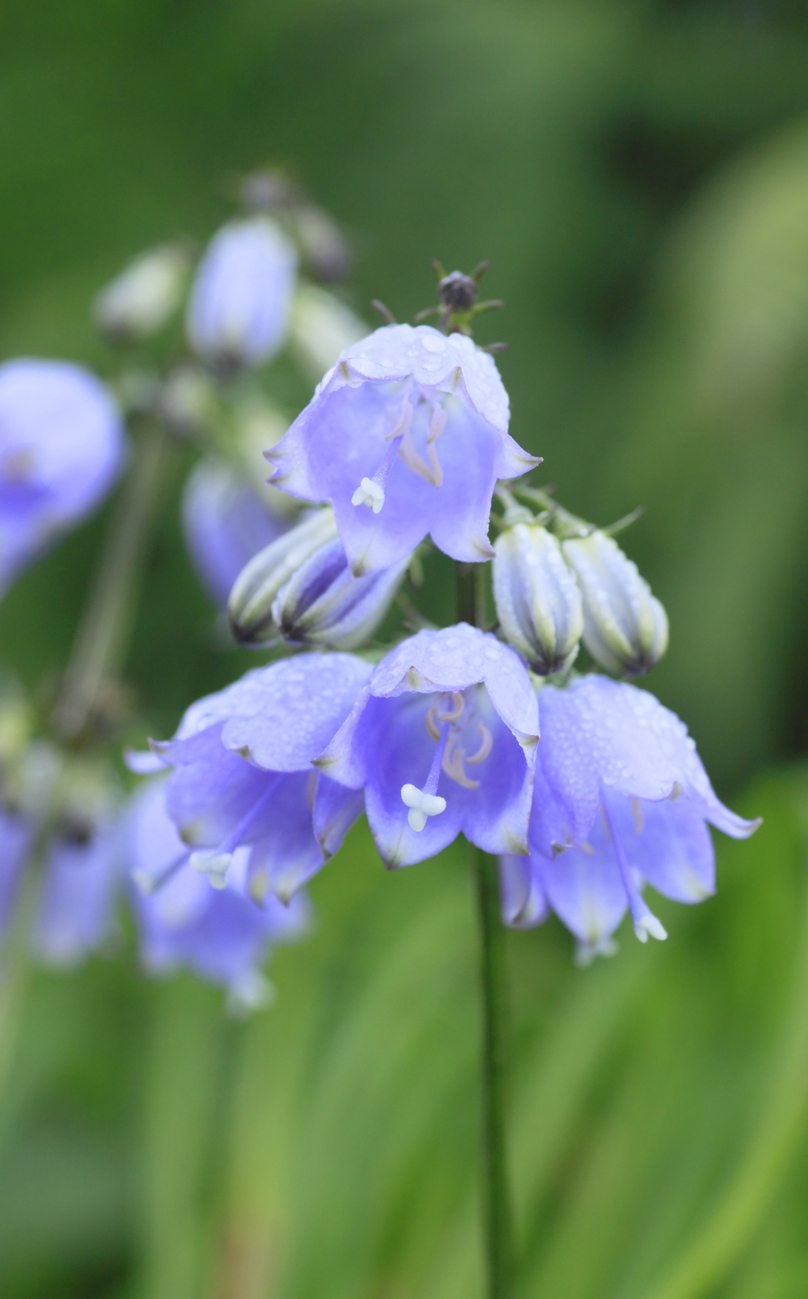Adenophora Plant Info – Tips On How To Care For Adenophora In The Garden


Also known as false campanula, ladybells (Adenophora) sports tall spikes of attractive, bell-shaped flowers. Adenophora ladybells are attractive, elegant, easy-to-grow plants often grown within borders. Read on for Adenophora plant info and learn the specifics of growing false campanula in gardens.
Adenophora Plant Information
There are at least ten species of Adenophora ladybells. However, the most common include purple ladybells, which produce blue flowers and grows in USDA zones 7 to 9. Common ladybells, with droopy blue flowers, and lilyleaf ladybells, with blue or white hanging blooms, are both hardier plants suitable for zones 3 through 7. Lilyleaf ladybells and purple ladybells reach heights of 18 to 24 inches (46-61 cm.) at maturity, while common ladybells display sturdy spikes of 24 to 36 inches (61-91 cm.).
Growing False Campanula in Gardens
False campanula is difficult to transplant or divide due to the long roots, but it’s easy to grow from seed in spring or fall. You can also propagate false campanula by taking stem cuttings from mature plants in late spring. Although it tolerates partial shade, Adenophora ladybells prefer full sunlight. Average, well-drained soil is suitable for most species.
How to Care for Adenophora Ladybells
Caring for ladybells is uninvolved, but here are a few helpful tips: Irrigate regularly during the warm summer months but be careful not to overwater. Ladybells exposed to hot afternoon sunlight may need a little more water. Deadhead plants regularly to encourage more blooms. Deadheading also keeps the plant tidy and prevents rampant reseeding. Fertilizer is optional, although the plant may benefit from a dry, time-release fertilizer applied in spring. Cut plants near the base in fall or spring. Spread a layer of mulch around the plants in autumn if the winters are cold. Adenophora ladybells are generally pest and disease resistant. However, slugs may be a problem.
Are Ladybells Invasive?
Invasiveness depends on the species. Most, including the three species mentioned above, aren’t considered invasive, but they can definitely be aggressive. Regular deadheading immediately after blooming is critical if you don’t want seeds to scatter throughout your garden. The plant may also spread by runners, but the roots tend to grow slowly so this usually isn’t a major problem. Creeping bellflower (Campanula rapunculoides), however, is a separate species that escapes cultivation in a hurry. This bully spreads by seeds and by aggressive underground roots. Think twice before starting this thuggish plant in your garden. Once established, creeping bellflower is extremely difficult to get rid of because even small pieces of the root can begin a new plant.
Gardening tips, videos, info and more delivered right to your inbox!
Sign up for the Gardening Know How newsletter today and receive a free copy of our e-book "How to Grow Delicious Tomatoes".

A Credentialed Garden Writer, Mary H. Dyer was with Gardening Know How in the very beginning, publishing articles as early as 2007.
-
 Looking For Plants To Give You The Soft And Fuzzies? Try These 5 Fuzzy Leaf Plant Options
Looking For Plants To Give You The Soft And Fuzzies? Try These 5 Fuzzy Leaf Plant OptionsLovers of texture, drama, silver foliage and tactile plants will adore these special sensory garden additions. These fuzzy leaf plant options will leave you all aglow
By Susan Albert
-
 Get Ready For A Summer Of Hummers! Grow These Full Sun Hummingbird Plants and Flowers
Get Ready For A Summer Of Hummers! Grow These Full Sun Hummingbird Plants and FlowersIf you’re lucky enough to enjoy a sunny backyard, make sure you are maxing out on your pollinator opportunities and grow these full sun hummingbird plants and flowers
By Tonya Barnett